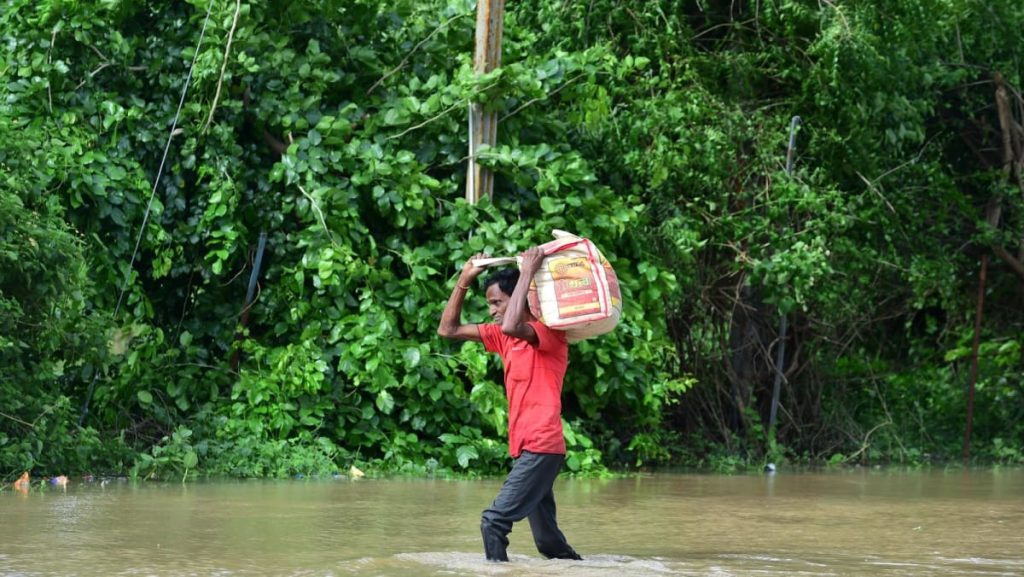In India’s Gujarat state, intense monsoon rains and floods have led to the deaths of at least 28 people in the past three days. The casualties were a result of some individuals drowning in the flooded areas, while others were struck by falling trees. The weather department has issued a warning for more heavy rainfall on Thursday, adding to the ongoing challenges faced by residents of the western coastal state. Rivers have overflowed, causing widespread flooding, and over 30,000 people have been forced to evacuate their homes to seek safety.
The state government confirmed that 13 individuals succumbed to drowning, while others perished due to their homes collapsing or being struck by falling trees. Reports from the Indian Express suggest that a total of 35 people have lost their lives in the state due to the severe weather conditions. Rescue efforts have been ongoing, with disaster response teams and the army deployed to assist in relief operations. A total of 1,856 individuals have been rescued from the affected areas, showcasing the magnitude of the disaster and the urgency of the situation.
Among the cities worst affected by the flooding is Vadodara, which has borne the brunt of the heavy rainfall and rising river levels. Infrastructure has been severely impacted, with roads and buildings submerged under water. Rescue teams have been working tirelessly to evacuate stranded residents and provide them with necessary aid. The situation remains critical as the forecast calls for additional heavy rain, raising concerns about further inundation and potential risks to human life.
The widespread flooding and devastation caused by the monsoon rains in Gujarat highlight the vulnerability of coastal areas to extreme weather events. Climate change is exacerbating the frequency and intensity of such disasters, underscoring the need for better disaster preparedness and mitigation efforts. The government and emergency response teams are working around the clock to provide assistance to those affected, but the scale of the crisis demands a concerted and coordinated response from all stakeholders.
As the death toll continues to rise and more areas become inundated, the focus is on ensuring the safety and well-being of residents in the affected regions. Relief supplies, medical assistance, and shelter are being provided to those displaced by the flooding. The resilience of communities in the face of such disasters is evident, as individuals come together to support one another and rebuild their lives. The road to recovery will be long and challenging, but with collective effort and support, Gujarat will overcome this crisis and emerge stronger than before.
In the aftermath of the devastating floods, the need for sustainable urban planning and infrastructure development in vulnerable areas becomes apparent. As the climate crisis worsens, proactive measures such as early warning systems, flood-resistant structures, and community-based disaster preparedness initiatives are essential to minimize the impact of future disasters. By learning from the lessons of this tragedy, Gujarat and other at-risk regions can better protect their populations and build resilience in the face of increasingly unpredictable weather patterns.


